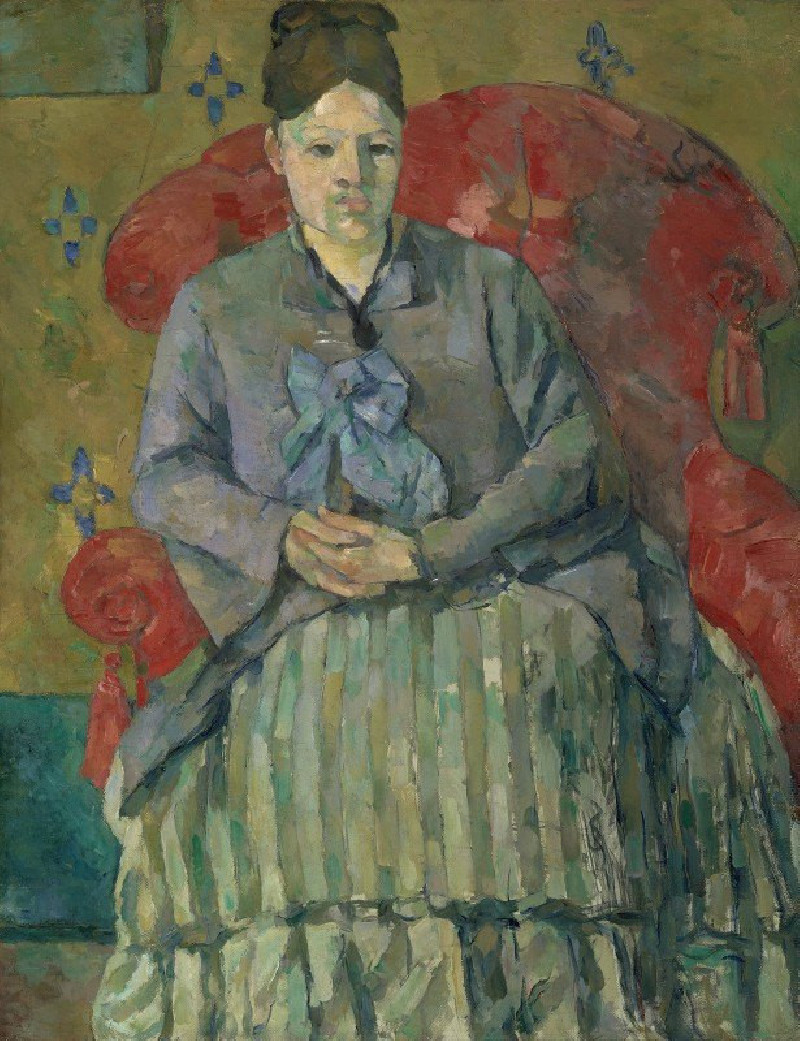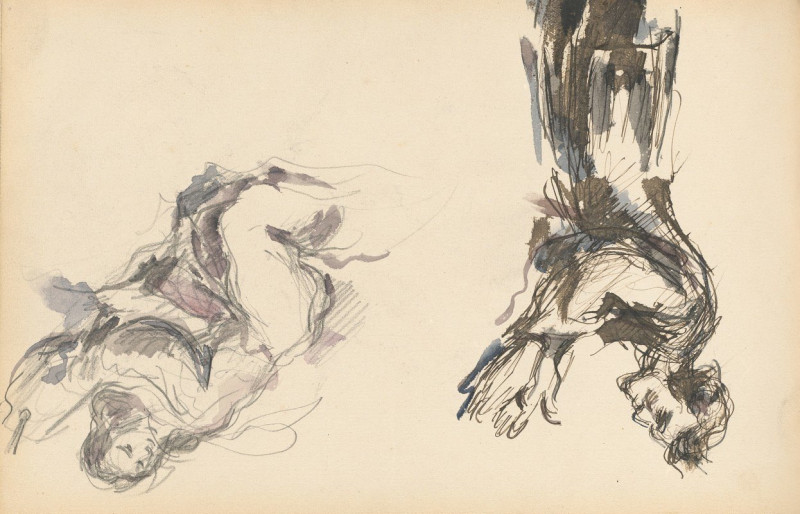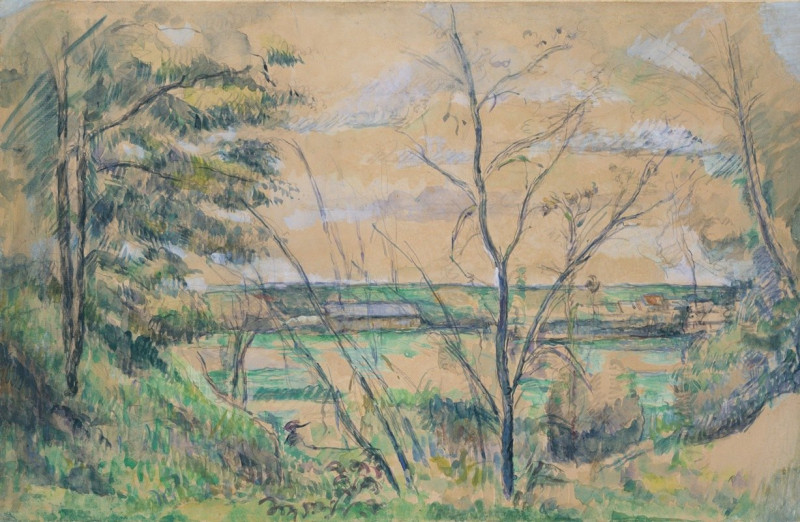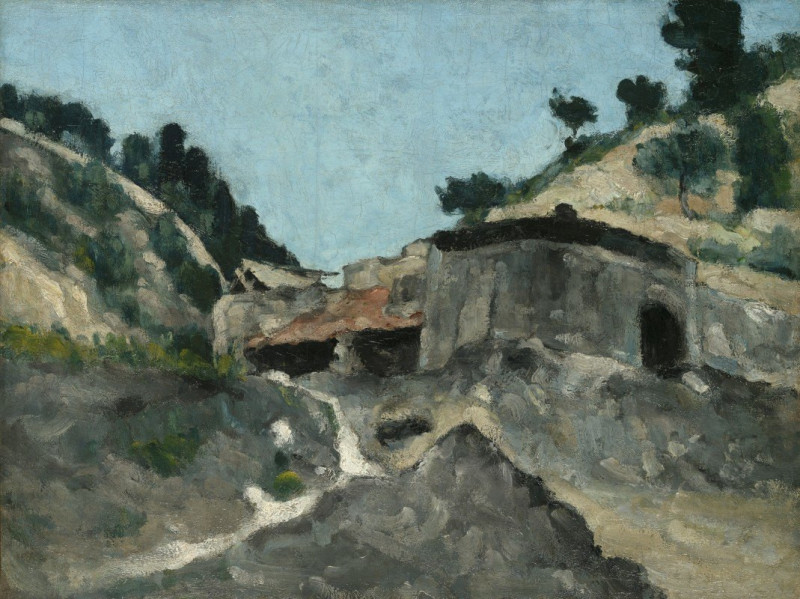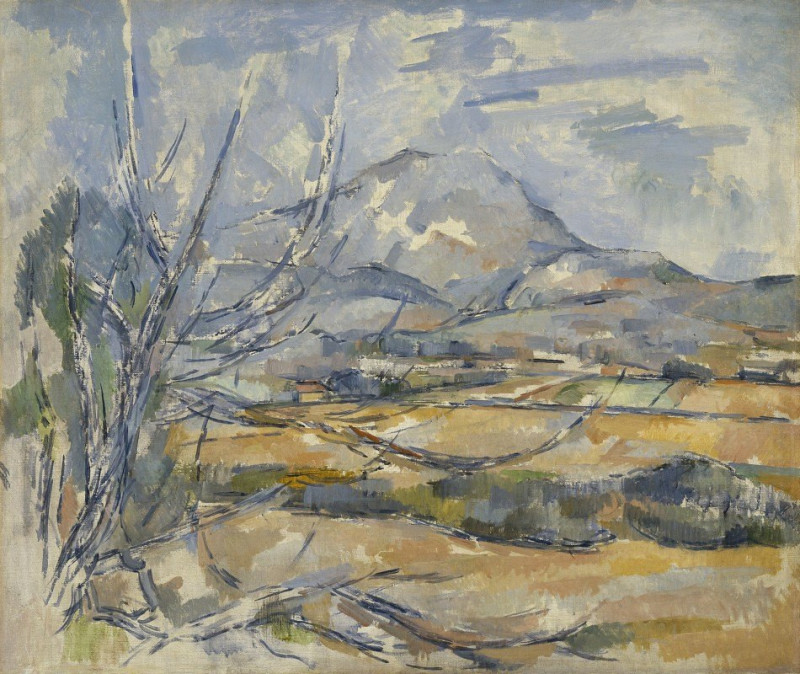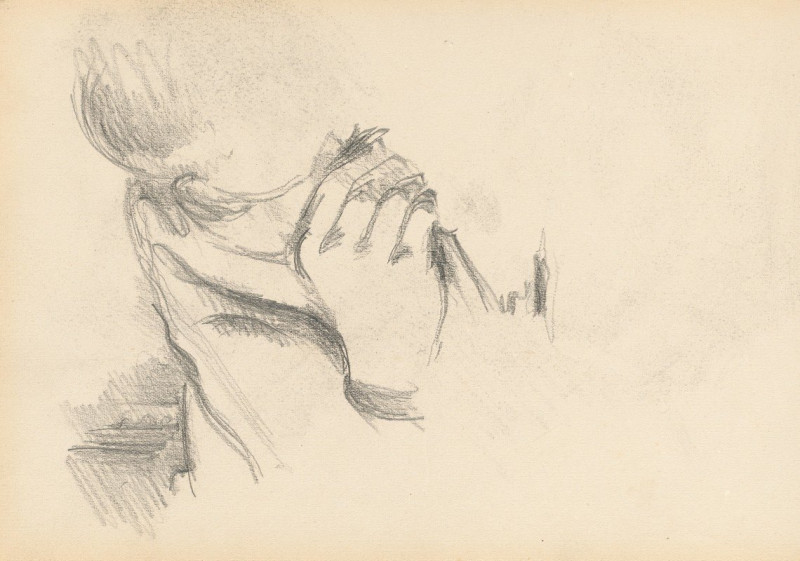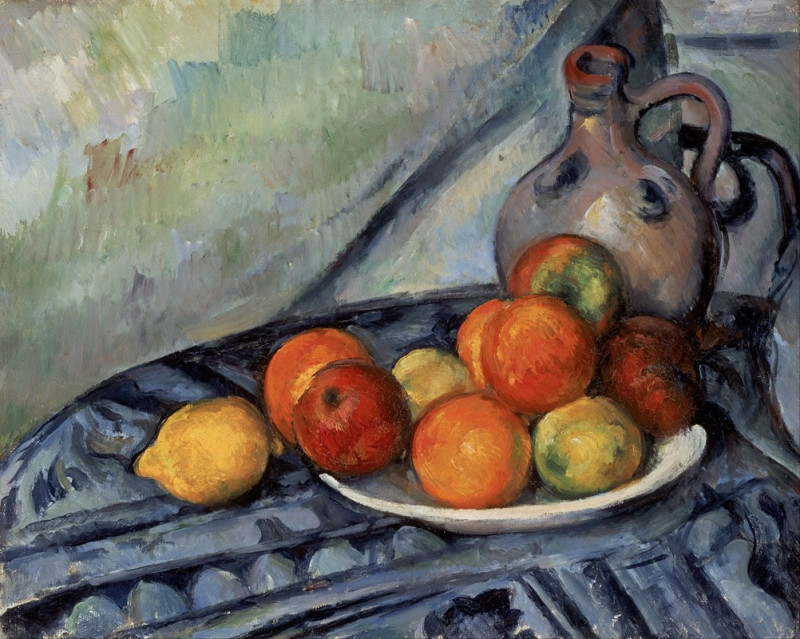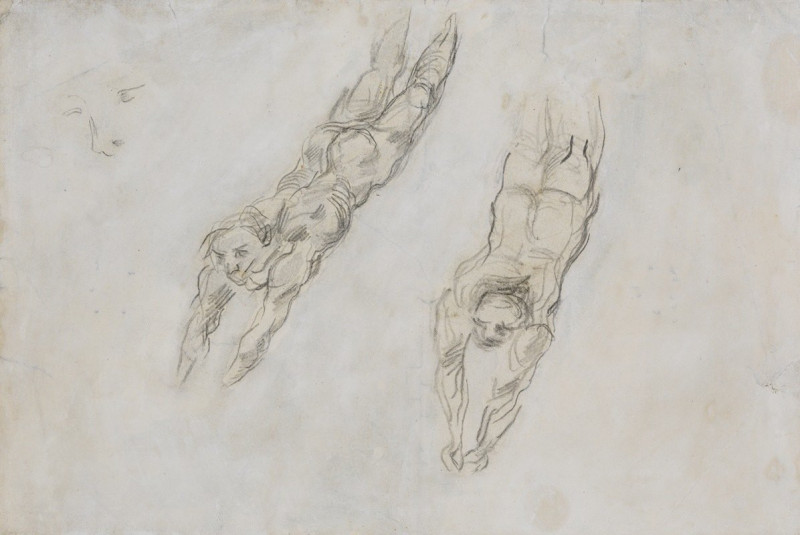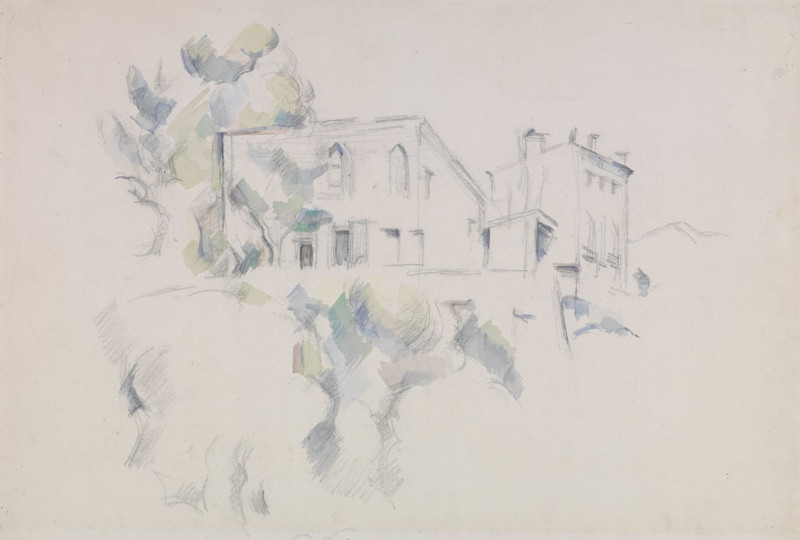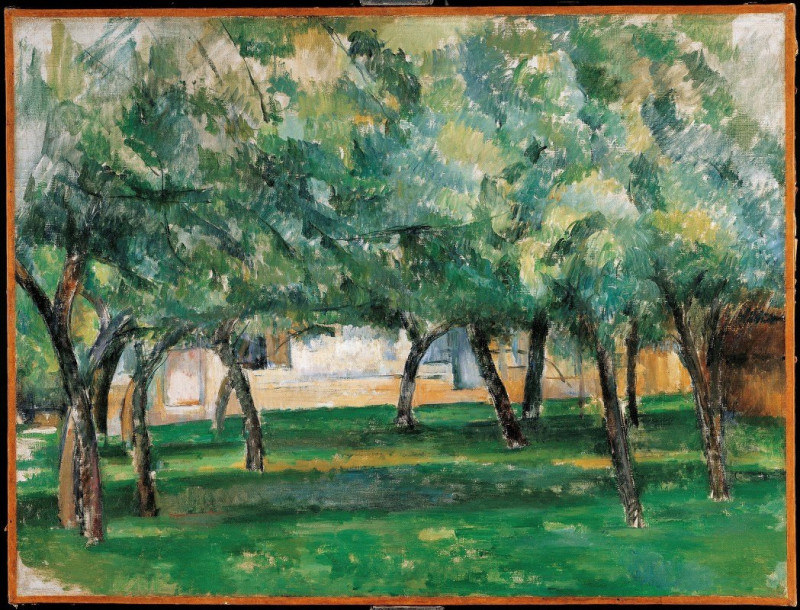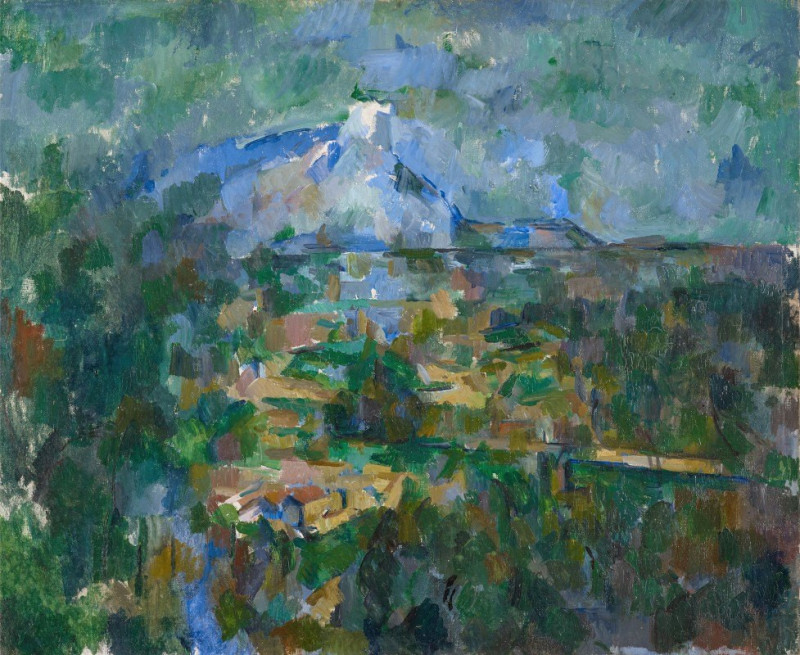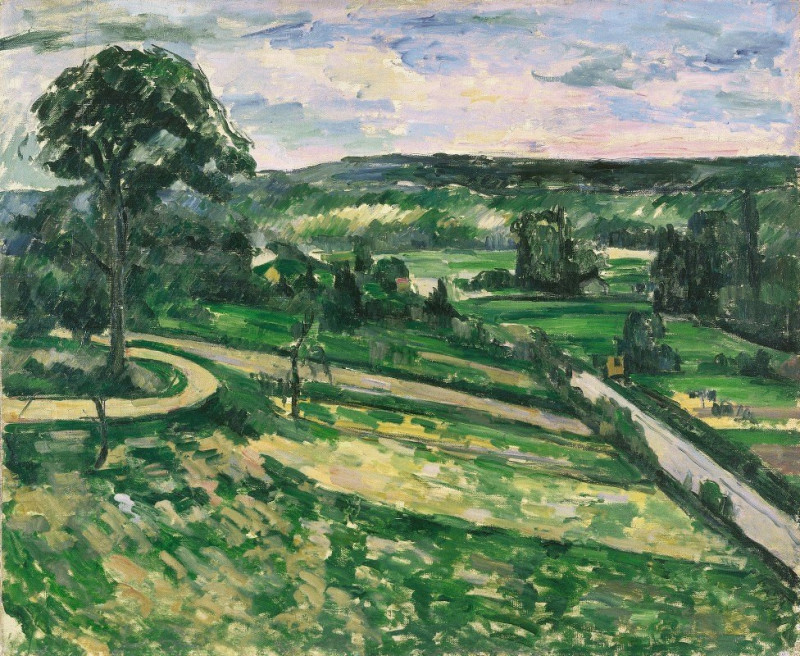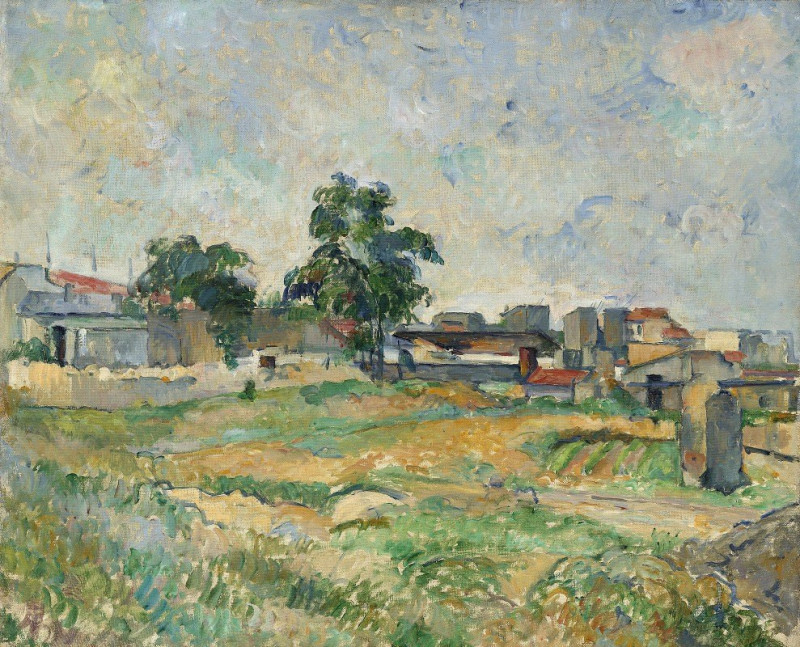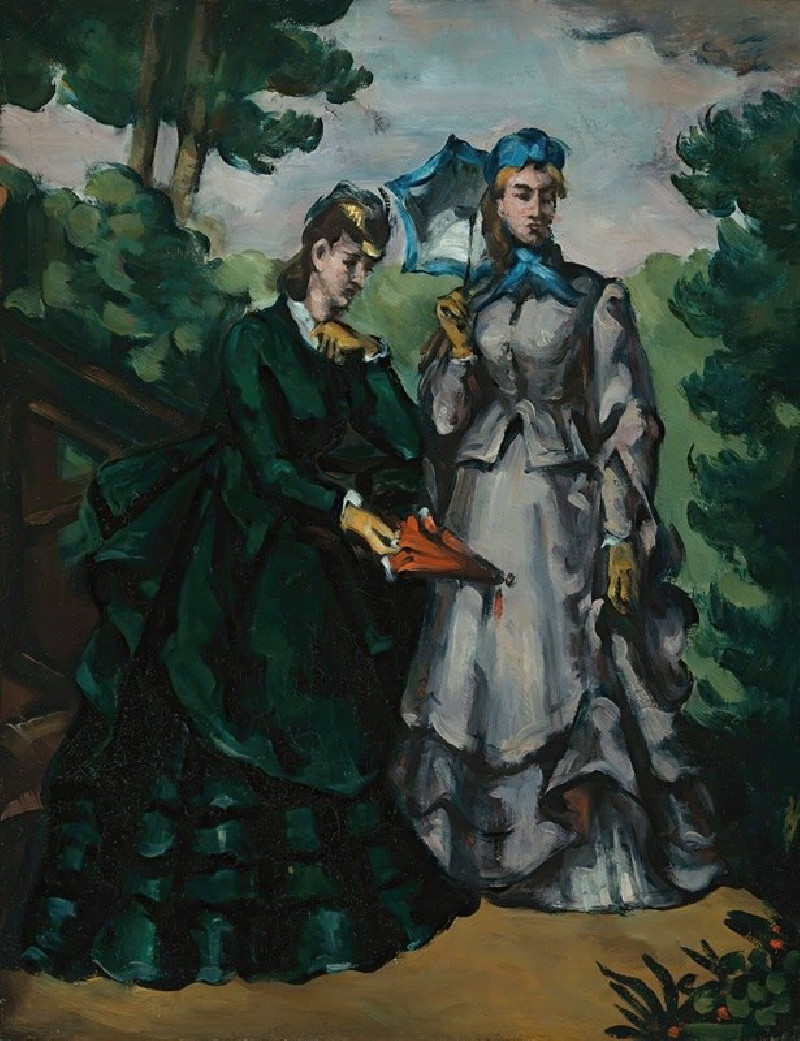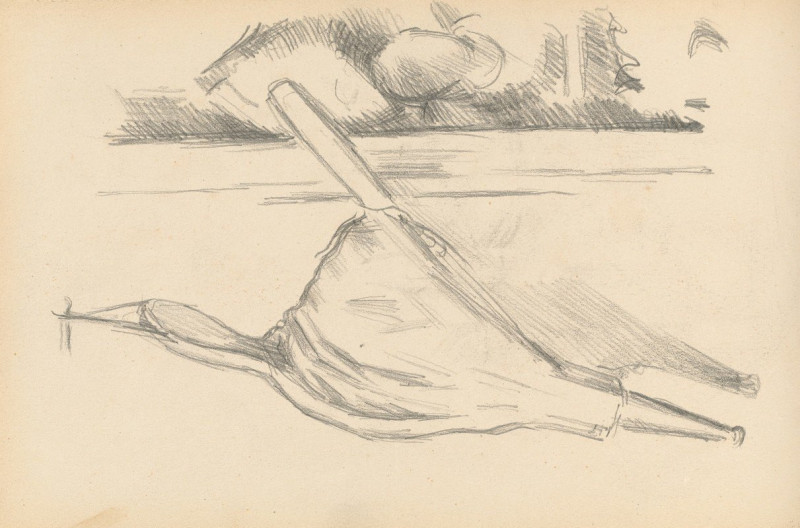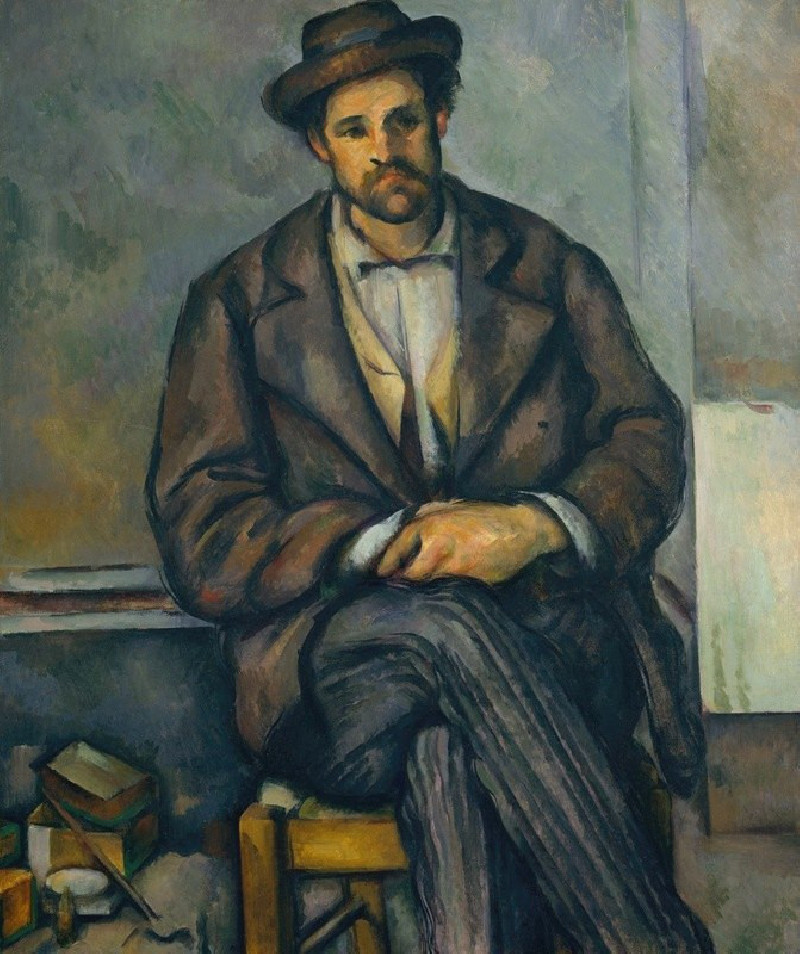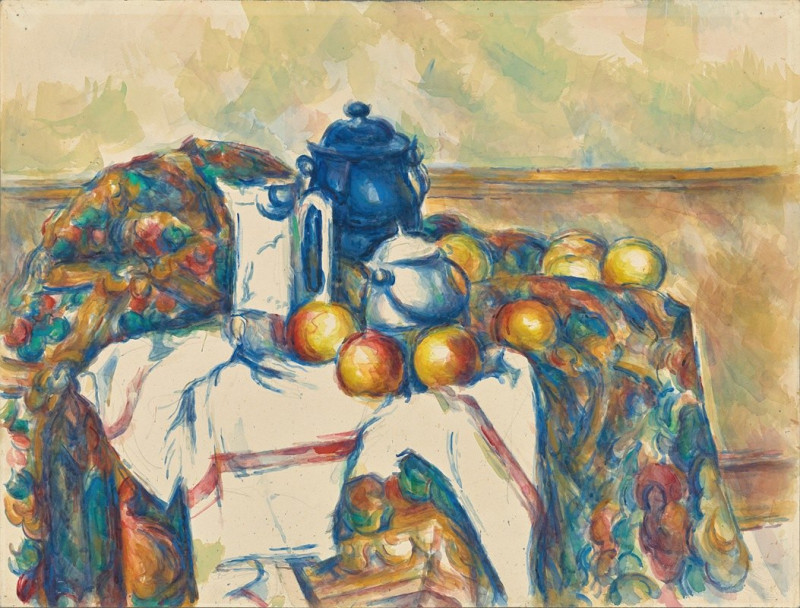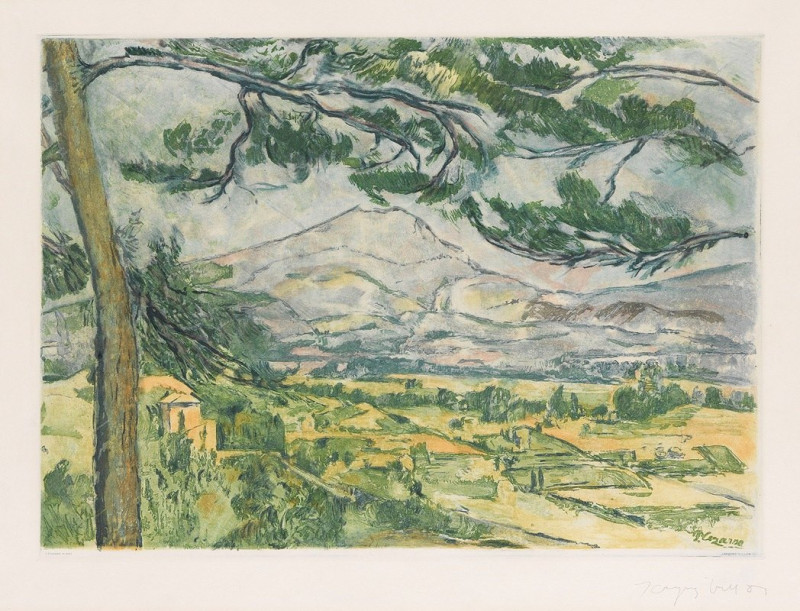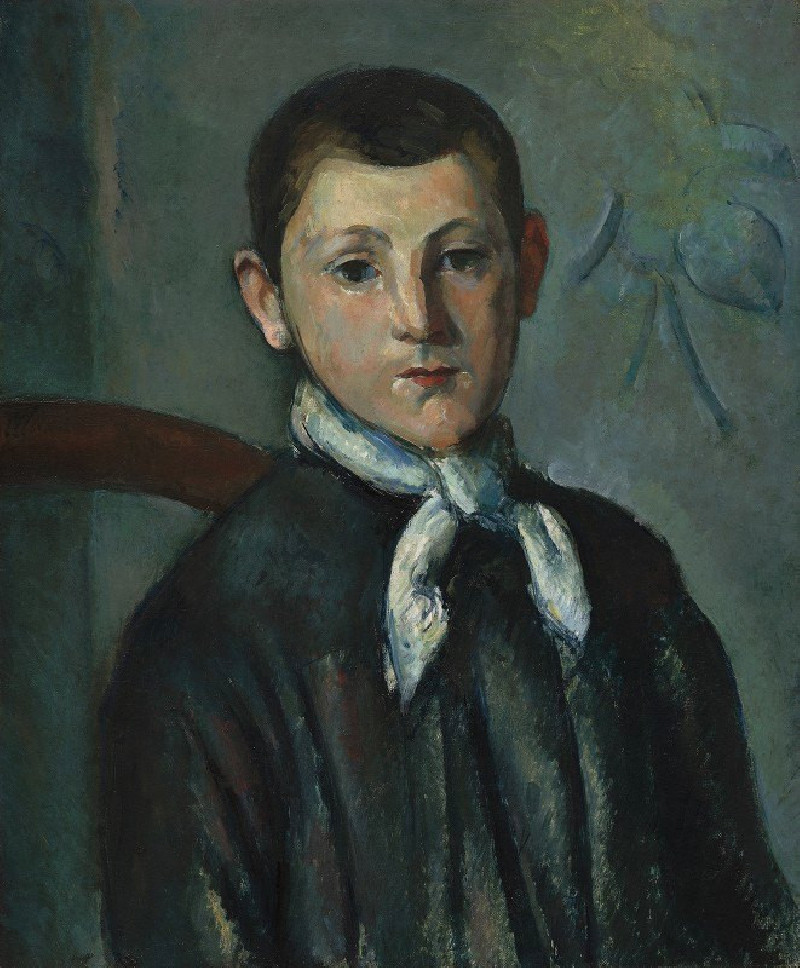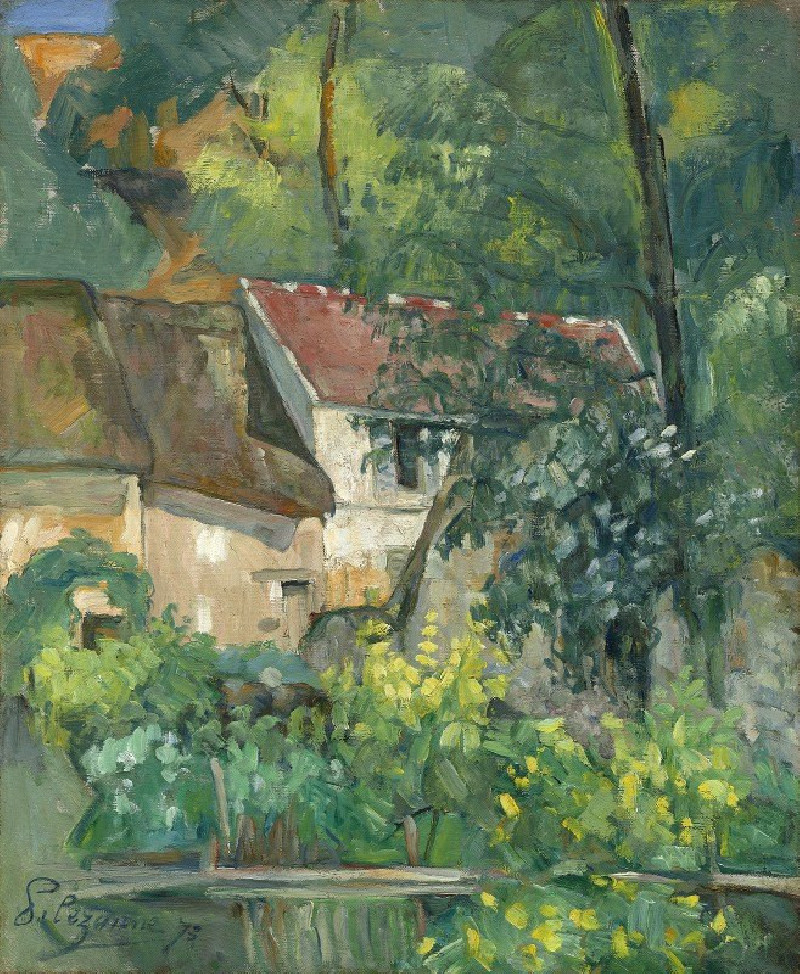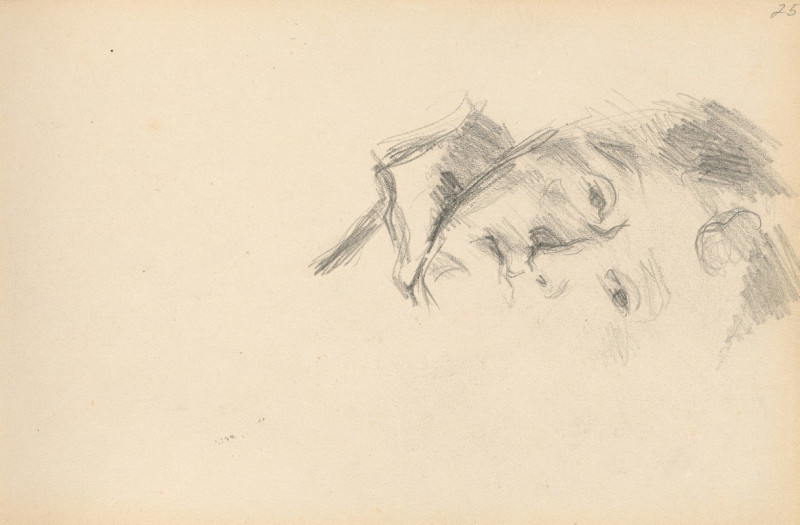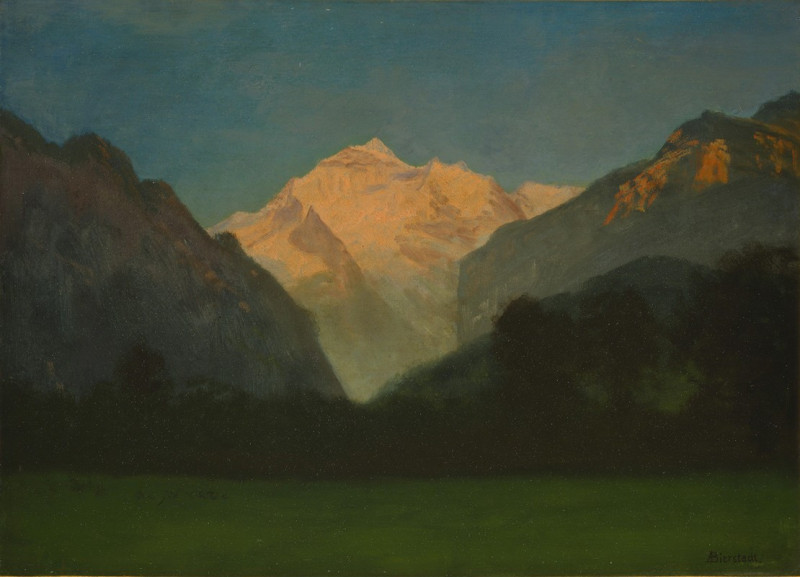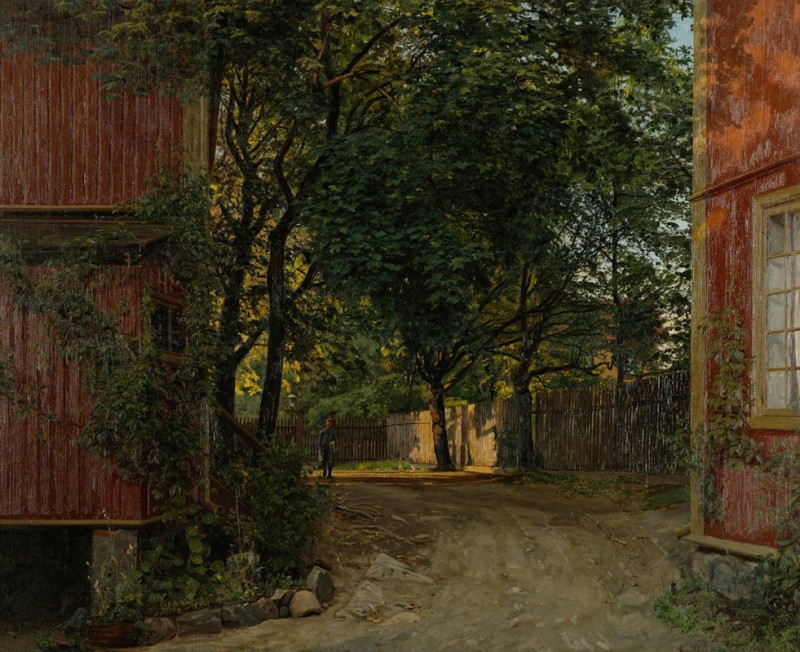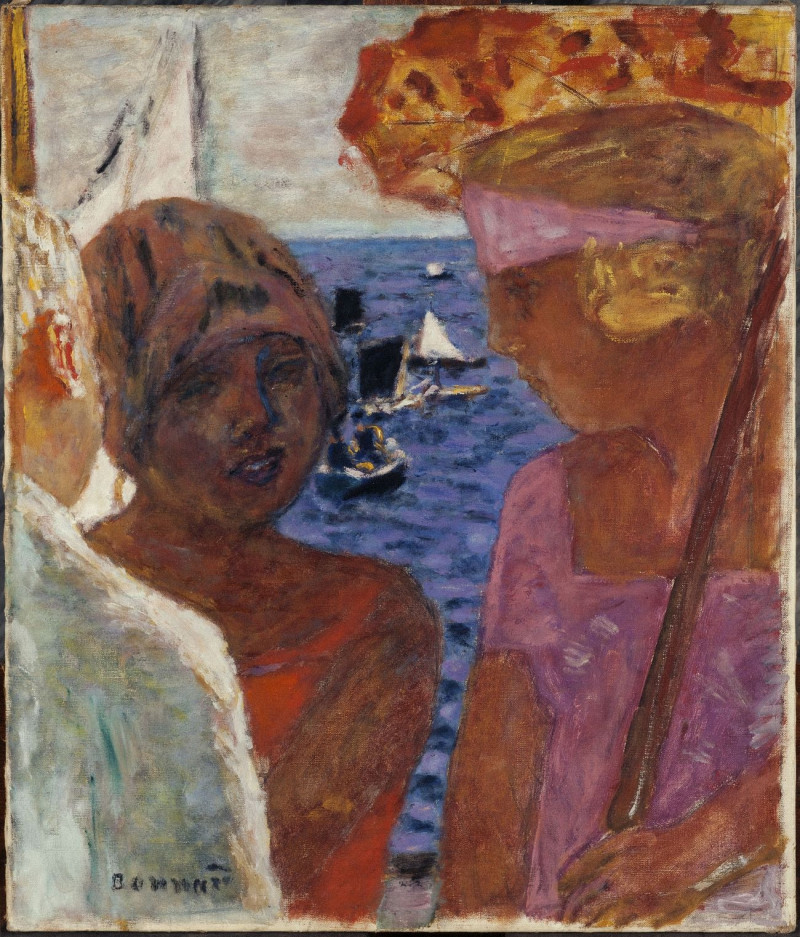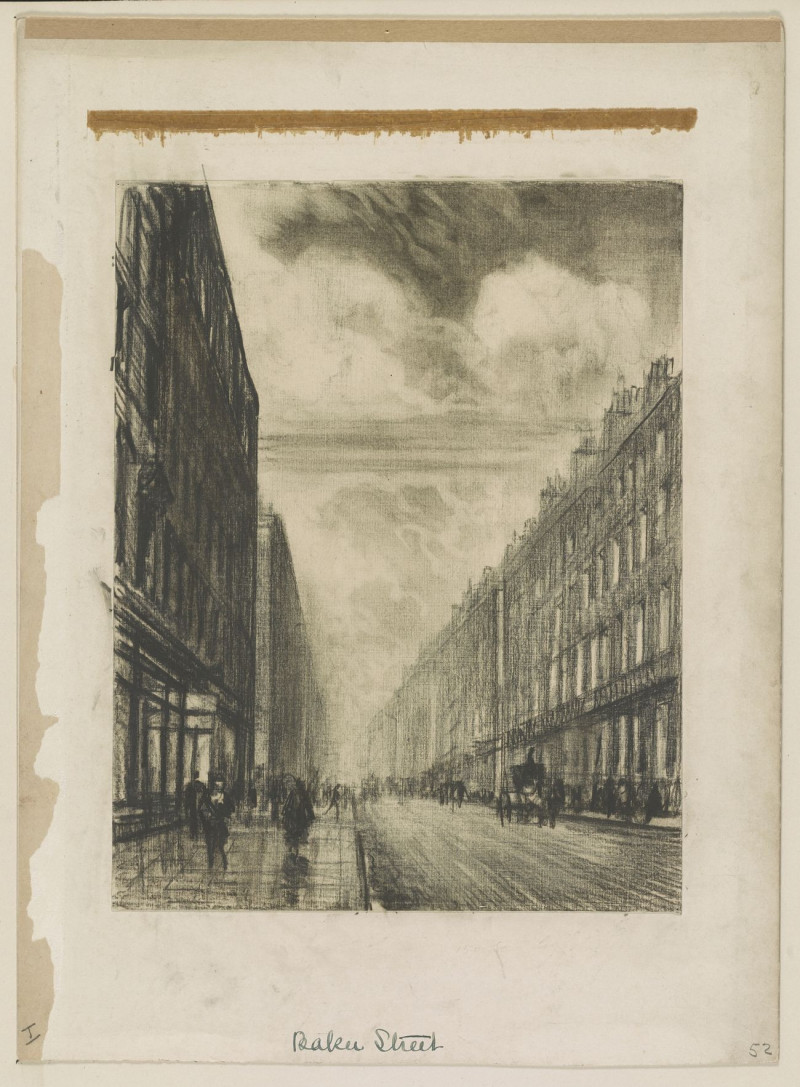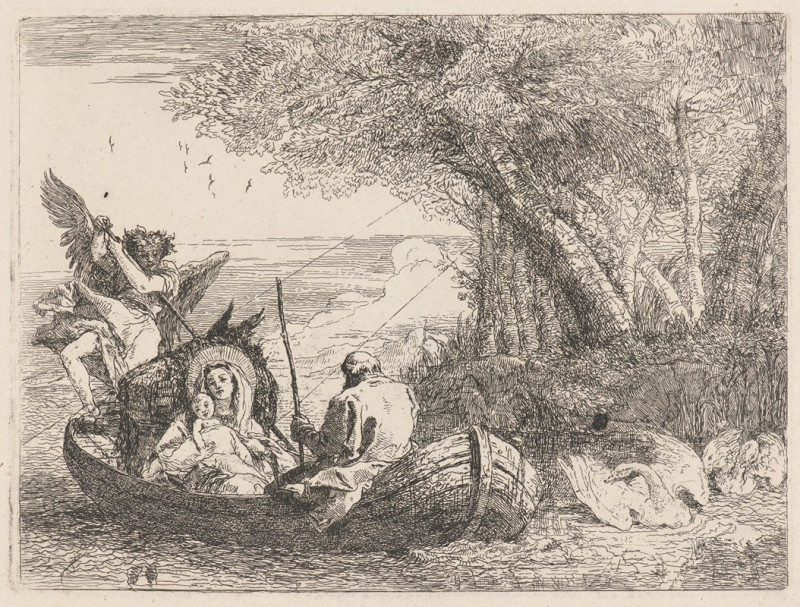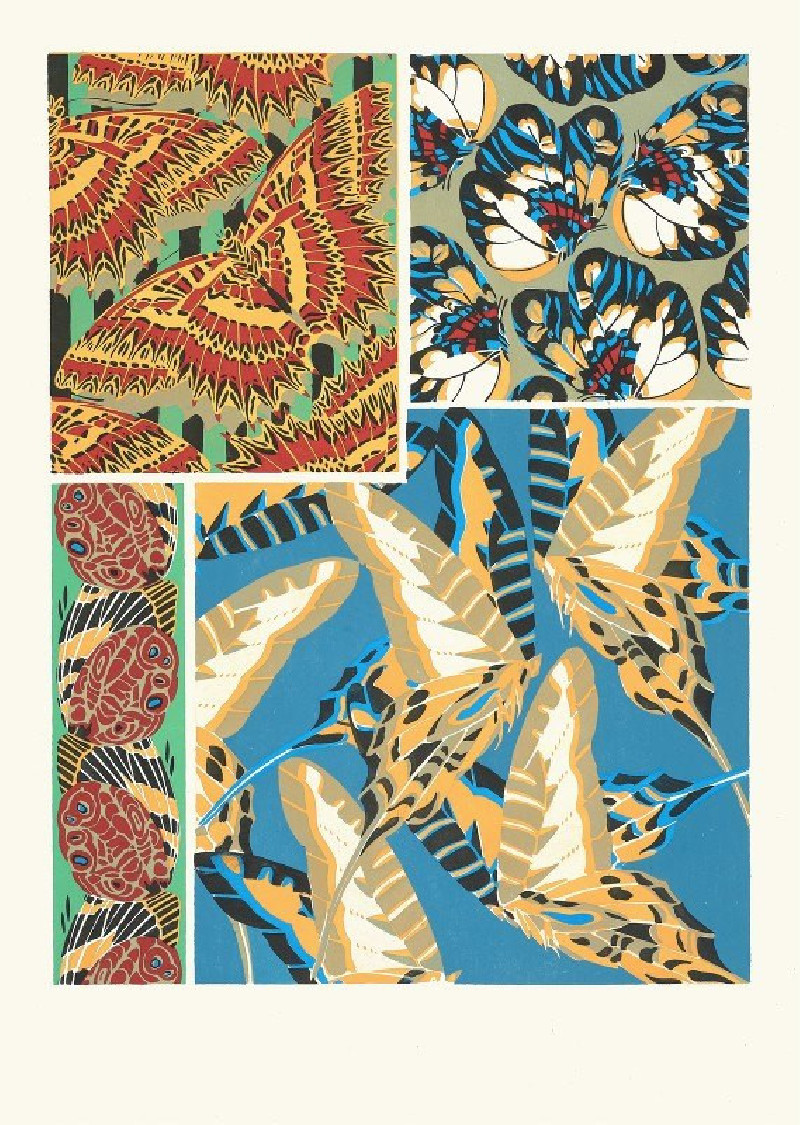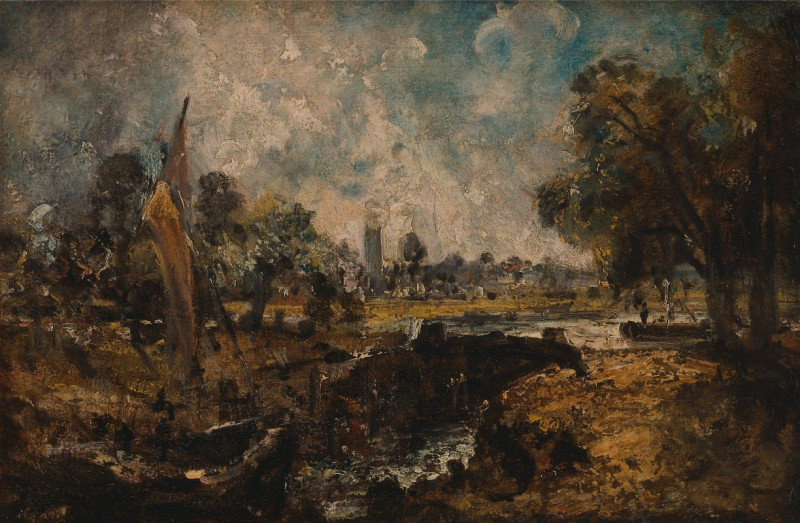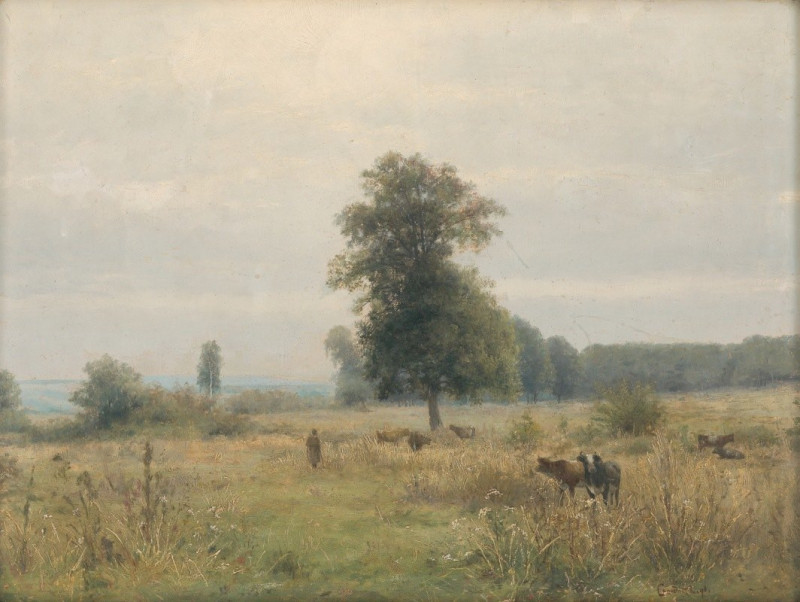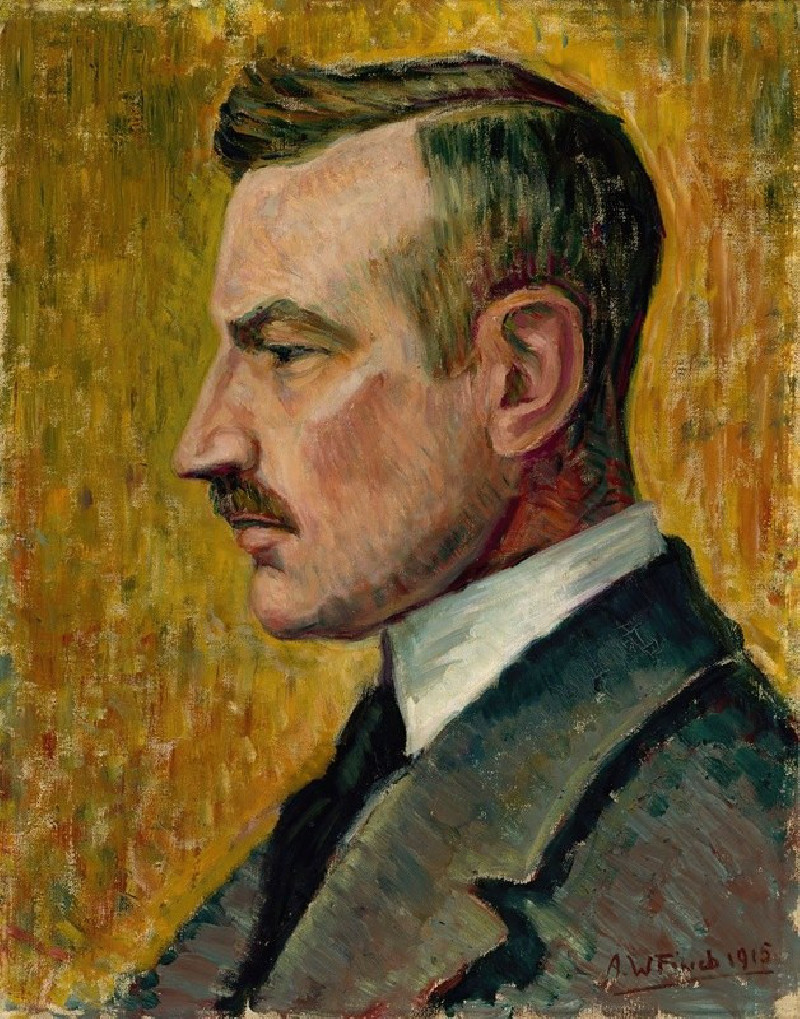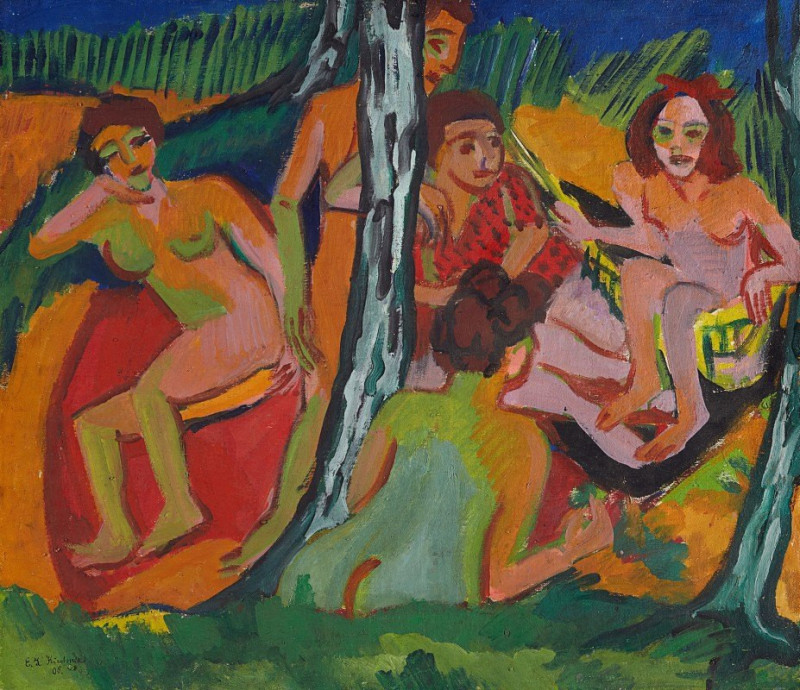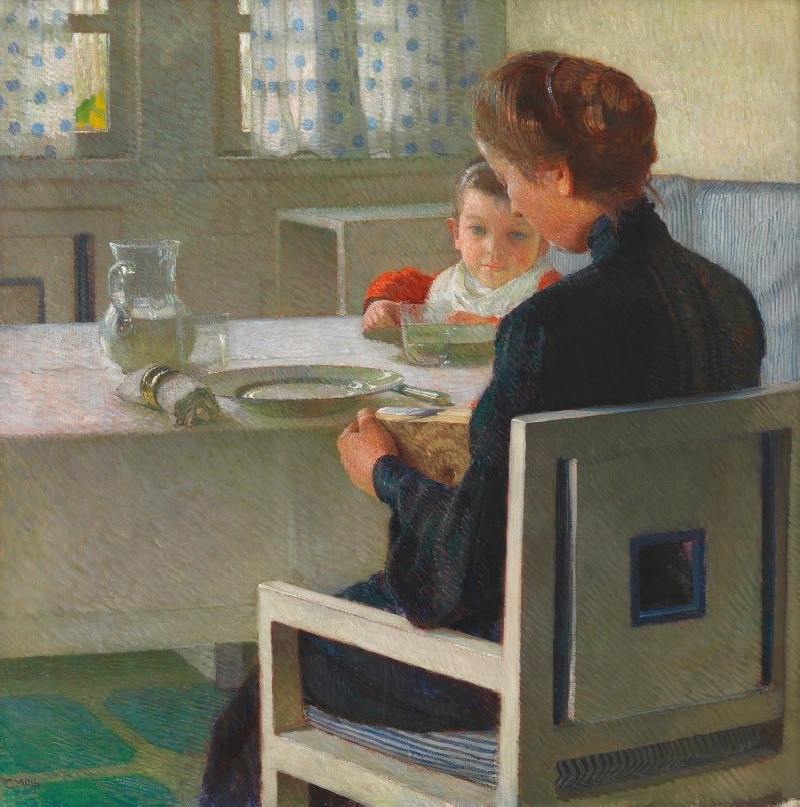Femme Nue Debout (circa 1898-99)
Technique: Giclée quality print
Recommended by our customers
More about this artwork
"Femme Nue Debout," created by Paul Cézanne around 1898-99, exemplifies the profound shift in the portrayal of the human form that marked the late 19th century. This remarkable piece depicts a nude woman standing in a relaxed pose with one foot slightly elevated on a small step, her hands comfortably resting behind her head. The model's direct gaze and serene demeanor convey a sense of candidness and naturalism, diverging from the idealized representations often seen in earlier art periods.Cézanne, renowned for his unique approach to form and color, uses bold, almost disjointed brush strokes to build the figure and the space around her. The background is abstractly divided into sections of muted browns and an orange-red tone that subtly shifts in hue, projecting depth and adding intensity to the composition. This painting is a testament to Cézanne’s ability to break down elements into geometric shapes, a technique that paved the way for modernist movements such as Cubism."Femme Nue Debout" is not just a depiction of a figure; it is an exploration of human presence and the artist’s perception.


